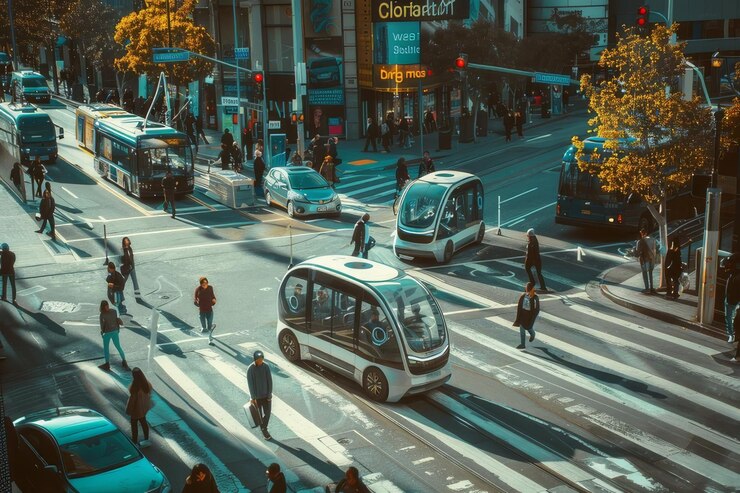Introduction
In recent years, the concept of ghost carts has emerged as a revolutionary solution to address the challenges of urban mobility and sustainability. Ghost carts are autonomous, electric, and often shared vehicles designed to transport goods and people efficiently within cities. By leveraging advanced technology and innovative design, ghost cart’s aim to reduce congestion, minimize environmental impact, and enhance the overall quality of urban life. This article explores the features, benefits, and potential impact of ghost carts on modern cities.
What are Ghost Carts?
Ghost cart’s , also known as autonomous delivery vehicles or driverless carts, are self-driving electric vehicles designed for short-distance transportation within urban environments. These vehicles can be used for a variety of purposes, including:
- Goods Delivery: Ghost cart’s can transport packages, groceries, and other goods from warehouses or stores to customers’ doorsteps. This application is particularly valuable for last-mile delivery, where traditional delivery methods often face challenges such as traffic congestion and parking issues.
- Passenger Transport: Some ghost carts are designed to carry passengers, providing a convenient and eco-friendly alternative to traditional taxis or rideshare services. These vehicles can navigate busy city streets autonomously, offering a seamless and efficient transportation experience.
- Public Services: Ghost carts can also be used for public services such as waste collection, street cleaning, and maintenance. By automating these tasks, cities can improve efficiency and reduce labor costs.
Key Features of Ghost Carts
- Autonomous Navigation: Ghost carts are equipped with advanced sensors, cameras, and artificial intelligence (AI) systems that enable them to navigate city streets safely and efficiently. These systems allow the vehicles to detect obstacles, follow traffic rules, and make real-time decisions to ensure smooth operation.
- Electric Power: Most ghost cart’s are powered by electric batteries, making them an environmentally friendly alternative to traditional gasoline-powered vehicles. Electric power reduces greenhouse gas emissions, noise pollution, and dependence on fossil fuels.
- Connectivity: Ghost cart’s are often connected to central control systems that monitor and manage their operations. This connectivity allows for real-time tracking, route optimization, and remote troubleshooting, enhancing the reliability and efficiency of the service.
- Modularity: Some ghost cart designs feature modular components that can be easily swapped or upgraded. This flexibility allows the vehicles to adapt to different use cases and extend their operational lifespan.
Benefits of Ghost Carts
- Reduced Traffic Congestion: By automating and optimizing delivery and transportation services, ghost cart’s can help reduce traffic congestion in urban areas. Fewer delivery trucks and personal vehicles on the road can lead to smoother traffic flow and shorter travel times.
- Environmental Sustainability: Ghost carts contribute to environmental sustainability by reducing carbon emissions and air pollution. Their electric power and efficient operation help minimize the ecological footprint of urban transportation.
- Cost Efficiency: Automation and electric power can significantly reduce the operational costs associated with transportation and delivery services. Ghost carts can lower labor costs, fuel expenses, and maintenance costs, providing economic benefits for businesses and municipalities.
- Improved Accessibility: Ghost carts can enhance accessibility in urban areas by providing convenient and affordable transportation options. This is particularly beneficial for individuals with mobility challenges or those living in areas with limited public transit options.
- Enhanced Safety: Autonomous navigation systems can improve safety by reducing the risk of human error in driving. Ghost carts are designed to follow traffic rules and respond to potential hazards, potentially leading to fewer accidents and safer streets.
Challenges and Considerations
While ghost carts offer numerous benefits, there are also challenges and considerations that need to be addressed:
- Regulatory Framework: The deployment of ghost cart’s requires a supportive regulatory framework that addresses issues such as safety standards, liability, and data privacy. Policymakers need to collaborate with technology developers to create regulations that ensure safe and ethical use of autonomous vehicles.
- Public Acceptance: The adoption of ghost carts depends on public acceptance and trust in the technology. Educating the public about the benefits and safety of autonomous vehicles is essential to gain widespread support.
- Infrastructure: Urban infrastructure may need to be adapted to accommodate ghost cart’s , including dedicated lanes, charging stations, and communication networks. Investments in infrastructure are necessary to support the effective integration of autonomous vehicles into city environments.
- Technological Reliability: Ensuring the reliability and robustness of autonomous navigation systems is critical. Continuous testing, validation, and improvement of AI and sensor technologies are necessary to achieve consistent and safe performance.
Conclusion
Ghost carts represent a promising advancement in urban mobility and sustainability. By leveraging autonomous technology and electric power, these innovative vehicles have the potential to transform the way goods and people are transported within cities. While challenges remain, the benefits of reduced congestion, improved environmental sustainability, and enhanced accessibility make ghost cart’s a compelling solution for the future of urban transportation. As technology continues to evolve and regulatory frameworks are developed, ghost cart’s may become a common sight on city streets, contributing to smarter, greener, and more efficient urban living.

